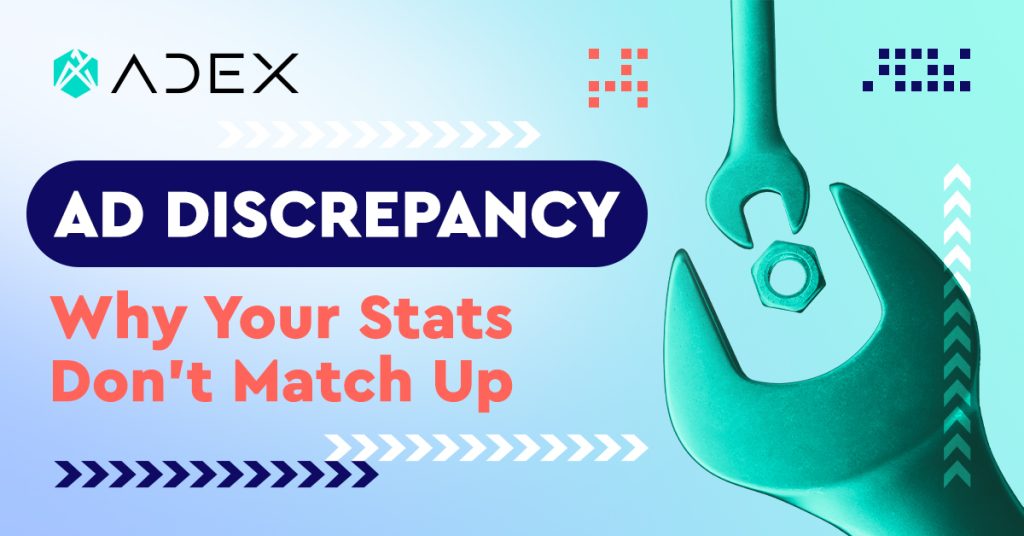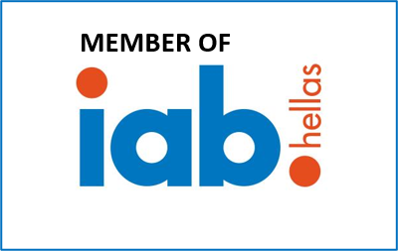You most likely faced a problem when your ad trackers showed you a different number of impressions, clicks, or even conversions. It’s a pain point for many advertisers and publishers because precise data is what you need for smooth traffic purchase and monetization. Monitoring traffic quality at ADEX also involves collecting stats — and these stats can also suffer from discrepancy.
This problem is very widespread, but it’s not always an issue. Experts claim a discrepancy of up to 20% is a norm and should not cause a lot of worries. If it goes higher, though, it’s time to pay attention to possible reasons — and, of course, solutions. We gathered the most popular discrepancy reasons and tips on how to beat the problem: read on to find out!
What is ad discrepancy?
Simply put, a discrepancy is when your ad campaign or monetization stats differ in various trackers. Let’s look at an example to make things clearer.
You are an advertiser and have an offer from a CPA network. To promote this offer, you buy traffic at an ad network. Both a CPA network and an ad network have embedded trackers, where you can check your impressions, clicks, and other stats. Like many media buyers, you also use a third-party tracker, that shows particular data, too. Finally, you started working with ADEX to make sure you are getting high-quality traffic.
In a perfect world, all trackers would show you identical stats. However, in reality, you usually see different figures. For example, you check your impressions and they look like this:
| CPA Network | 8 835 impressions |
| Advertising Network | 9 500 impressions |
| Third-party Tracker | 8 970 impressions |
| ADEX | 8 655 impressions |
The main reason for the discrepancy is multiple redirects between your landing page and a traffic source. For instance, you receive traffic from an ad network, then it reaches an ADEX redirect or a landing page (depending on your ADEX integration method), and after it gets to a CPA network. Every platform that your traffic comes through may lose some data. For example, it often happens due to ad blocking systems.
However, redirects are not the only reason. We will show you what can affect your stats in ADEX and how you can minimize the discrepancy when tracking fraud traffic.
Discrepancy reasons and solutions
When we talk about a discrepancy that appears in a fraud detection tracker, we mean impressions. At ADEX, impressions stats show how many users were checked by an anti-fraud tool. Let’s see why your impressions may differ at ADEX and other ad trackers.
ADEX vs. Other Trackers Settings
ADEX offers various setting options. For instance, you can integrate a JS Tag into a single webpage, so ADEX will only track impressions from this page. Some ADEX customers prefer tracking only registered users, so they don’t see impressions from the rest of the visitors in ADEX stats. In this case, an ad network might show more impressions than ADEX, a CPA network, or a third-party tracker
What shall I do?
Just mind that ADEX doesn’t count impressions as your ad tracker does. Check your ADEX settings thoroughly to make sure you understand what will appear in your statistics under the Impressions tab.
ADEX Integration Methods
You can select between three integration methods when you set ADEX: JS Tag, Redirect, and iFrame. A discrepancy is more typical for the latter two options, and this is why:
- iFrame. You can’t load any landing page in an iFrame — for instance, many product owners disable this option for their pages. So, make sure you are allowed to use iFrame at all — otherwise, users won’t even reach your offer.
- Redirect. As the name suggests, this integration method implies an extra redirect that may cause a partial data loss. It might especially become an issue when you send traffic to Smartlink offers that also use redirects. So, using the Redirect integration method for Smartlinks might mean even more data losses — so be careful with this combo.
We did our best to make redirect work as quickly as possible — in fact, our technologies solve discrepancy issues on our side. You might still face some data losses, though — not because of ADEX, but some external factors we can’t affect.
What shall I do?
Avoiding extra redirects is the most obvious way out — and you can do it using JS Tag as the integration method. In fact, we offer JS Tag as the basic one-size-fits-all solution, and it is the only integration option that can help significantly minimize discrepancies.
One more tip on point for advertisers: one more way to reduce discrepancy is to work with direct offers. It allows you to avoid additional redirects that will inevitably appear with a CPA network.
Poor Internet Connection/Outdated gadgets
When a user has connection issues on their side, they might not see your ads properly. What usually happens in this case? A user clicks on an ad, and the ad network registers this click as an impression. If the user’s connection is too slow, they don’t see an offer appearing immediately after a click, and need to wait for some time. Of course, most of them don’t want to wait — and simply close an ad before the ADEX code can detect them and count them in its stats.
There also might be misclicks (when a user clicked on an ad accidentally) or short clicks when a user opened your ad but closed it before the ADEX code could detect this event. ADEX collects data very quickly — it takes a really short time span. Still, if a user closes an ad even quicker, say, within less than a second, ADEX might miss it.
What shall I do?
Obviously, you can’t affect your users’ Wi-Fi or mobile Internet speed. You can’t also make them all purchase brand new gadgets that ensure great connection. However, proper targeting settings may help.
Connection issues and outdated devices are widespread in Tier 3 GEOs. It doesn’t mean you should stop sending or purchasing traffic there of course. Still, if you separate your campaigns by GEO, you will see zones that lose data due to poor connection — and will have a clue for optimization.
Super Low-Quality Traffic
It may seem strange: isn’t low-quality traffic exactly what ADEX is supposed to detect first? Still, here we speak about very cheap and primitive bots — like those that can’t even load any JS scripts. Such low-quality bots might appear in your traffic source but not even reach the ADEX check and ad trackers, which may again cause a discrepancy.
What shall I do?
The easiest solution: be careful with purchasing the cheapest traffic. Our tests show that high-quality traffic causes a much lower discrepancy on redirect compared to low-end unfiltered traffic. So, it’s a good idea to separate your traffic by zones: ADEX can help you create black and white lists to optimize campaigns and get rid of junk.
Time Zone Difference
ADEX shows the data according to UTC (GMT-0). If the other trackers you use have different time settings, a discrepancy will appear just because of this difference. For example, you will see impressions that your CPA network has already registered, but they are not in ADEX yet (but will appear later).
What shall I do?
It’s probably the easiest: just have all platforms set for the same time zone. If it’s not possible, check the data minding the time difference.
To sum up
As you see, the discrepancy doesn’t necessarily mean your traffic is bad or you have serious issues with your campaigns. However, it can still affect your revenues: we bet you don’t want to pay for some weird traffic from the ad network that you can’t see at ADEX. We solve such problems: help customers claim refunds for low-quality or fraudulent traffic and prevent them from unwanted expenses.
So, your stats won’t suffer if you install ADEX tools — but your traffic quality and profit might significantly improve.
Join ADEX now to fight ad frauds and stay secure!


